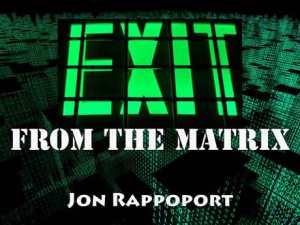Coaching the coaches
by Jon Rappoport
August 4, 2017
“Systems are fine, they’re good. But when people become attached to them, obsessed with them, want to operate inside them, that’s trouble. A person is not a system.” (The Underground, Jon Rappoport)
I wrote and published a series of articles on coaching. The project started when I received a query from a coach about my consulting services.
From the start, coaches face a peculiar situation. Their clients generally want systems.
Their clients are used to systems and want a better one.
But the truth is, most people don’t need a better system. They need to be spontaneous.
Spontaneity naturally flows as a side effect of imagination.
Imagination is the North Star. It is the faculty that is least understood and least sought after in our society.
People tend to say two things about imagination: it is a mysterious talent reserved for the few, or it is a toy for children’s fantasies that should be purged with the onset of adulthood.
Both of these assessments are completely false.
In coaching clients, whether the subject is personal problems, personal goals, business success, or success in relationships, I have never failed to find that imagination is the missing key.
But you see, imagination follows no system. It can’t be produced by building a machine that routinely turns it out. Imagination doesn’t operate according to formulas.
I fully understand that, as a coach, if you teach your client a better system, you may obtain results in the short-term. After a series of sessions, you and the client can walk away from each other and feel happy. But as time moves on, that client will discover his better system is breaking down. Yes, it can be laid over life like a grid, but eventually life will prove to be the winner.
Why? Because what life is asking for is imagination.
Imagination is the capacity to make quantum leaps and see realities that have not yet been created. It’s the capacity, when deployed, to invent those new realities.
It works in relationships, in achieving personal goals, in discovering new goals, in succeeding in business—in every aspect of life.
Because people live their whole adult lives ignoring and burying imagination, they are going to feel at a loss, when asked to tap into it. Where is it? In the hall closet, in the attic, in the garage, on the moon? And if they could find it, what would they do with it? Pet it on the head, feed it roast beef, take it for a walk, give it vitamins, play classical music for it?
For 99% of the population, this is an unexplored area. But you as a coach need to know about it. You need to understand it. You need to be intimately familiar with it. You need to be using it in your own life, above all. Every day. You need to be immersed in it. Breathing it.
Ultimately, life is an open available space for those who live through and by imagination.
—For engineers, architects, researchers, businesspeople, teachers, scholars, administrators, husbands, wives, children, workers, artists—for everyone.
The funny thing is, you can be working within the tightest system in the world, and if you deploy your imagination and come up with a solution that is innovative, making the system better—people will say, “This is wonderful. Why didn’t we think of it?” They didn’t think of it because they were thinking and perceiving inside the system.
On the surface, all human relationships may seem to exist in the framework of a system. But those relationships are actually waiting for imagination to exert a transforming effect, a transforming moment, and then people suddenly brighten, open up, and think:
“This is what being alive is.”
They’re right.
(To read about Jon’s mega-collection, Exit From The Matrix, click here.)
Jon Rappoport
The author of three explosive collections, THE MATRIX REVEALED, EXIT FROM THE MATRIX, and POWER OUTSIDE THE MATRIX, Jon was a candidate for a US Congressional seat in the 29th District of California. He maintains a consulting practice for private clients, the purpose of which is the expansion of personal creative power. Nominated for a Pulitzer Prize, he has worked as an investigative reporter for 30 years, writing articles on politics, medicine, and health for CBS Healthwatch, LA Weekly, Spin Magazine, Stern, and other newspapers and magazines in the US and Europe. Jon has delivered lectures and seminars on global politics, health, logic, and creative power to audiences around the world. You can sign up for his free NoMoreFakeNews emails here or his free OutsideTheRealityMachine emails here.
